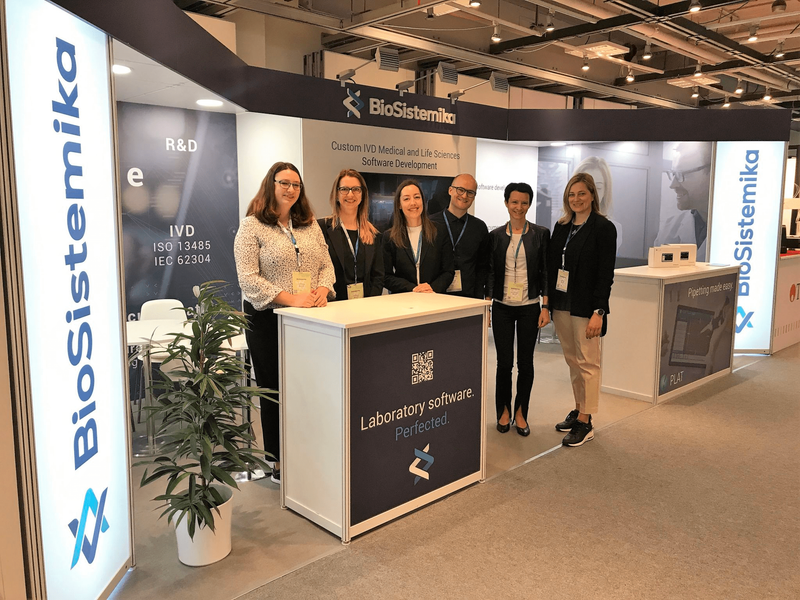Client’s challenges
Normally, we generate business leads through events, during which we visit different vendors. However, COVID-19 has motivated us to find other ways of scheduling meetings and we started to look for B2B lead generation services for healthcare.The reasons that prompted the client to partner with Belkins were the following:
- Canceled conferences and F2F meetings. When it comes to such high-value areas as Pharmaceuticals and Biotechnology, potential buyers want to be 100% confident about the services or products they will be used to improve their performance. This is why conferences, meetings, and trade shows used to be the best way for customers and vendors to get acquainted, speak about pain points and solutions, and build relationships. BioSistemika wasn’t an exception and, therefore, got hit hard by bans and restrictions imposed due to the COVID-19 pandemic.
- Lack of experience with cold outreach. The client needed a new sales channel for generating sales leads, engaging prospects, and converting them into buyers. While cold emails were the most convenient option, the client wasn’t familiar with all the stages of email outreach and needed some assistance from email marketing pros.
- Empty pipeline. To pull through the crisis, every company needs leads flowing non-stop through the pipeline. But the lead database of BioSistemika wasn’t large and capacious enough to give the company enough momentum.
Solutions
We have worked with three people: a salesperson, the key account manager, and the person in charge of actually arranging the meetings and contacting people.
1. Establishing communication
Whenever we have to build a cold outreach process from scratch, we have to make sure that it fits the client and the client’s customers. Therefore, our team and BioSistemika’s team went through a detailed onboarding process, during which both teams exchanged their tasks and duties, shared insights on each other's work and business culture, and provided all the information necessary for preparing b2b email marketing campaigns and market research. This step was essential for gathering feedback on our performance, sending reports, and ensuring that the client gains the highest value from our partnership.
2. Maxing out previous connections
While occupying a relatively small market niche, BioSistemika is known as a provider of high-class services and constantly receives praise from its clients for the provided services. Additionally, the client has been very active during trade shows and conferences, exchanging contact data, and learning about potential buyers. So, our first step was to make the most out of the connections — even those that haven’t been followed through. We started by researching the participants of the conferences that the client attended in the past.
| Why is it important? Even if modern B2B buyers prefer to do their homework before making a decision, they won't tolerate you leaving them hanging. Every response, whether positive or negative, should be addressed and processed. Every request must be instantly acknowledged. Keeping a conversation alive will fuel your prospects' interest and increase the probability of converting them into buyers. |
3. Building a strategy
During email outreach, going in blind was just not going to cut it. After all, you’re the one stepping out with unsolicited messages, so you have to be extremely precise, tactful, and informative. Our strategy involved:
- Targeting. Our business lead research teams gathered and organized a lead database. All prospects were broken down into segments, from A-tier to C-tier. It allowed us to get our priorities straight and understand where to focus our efforts. Mostly, our lead lists included contacts harvested from the client’s conferences and leads we researched from scratch. For BioSistemika, we targeted CEOs, VPs of Engineering, CIOs, CTOs across Italy, Germany, the Netherlands, the United States, Sweden, Switzerland, France, and the United Kingdom.
- Template writing. We made several sets of templates to meet the needs and interests of every prospect category. Everything from body text to headlines was written by our template writing team to match the language and tone that the client’s prospects found appealing. What are the requirements for writing good templates? Before our writers start making templates, they take a good look at the ICP and the database categories. Next, they do some research of their own, exploring terminology and jargon used in the prospects’ industry. Then, they write templates that appeal to potential recipients. To find the most productive template, our writers make several versions for A/B testing and then choose the most effective one.
- Communication. Our assigned SDRs handled the process of each outreach campaign, engaging prospects, working with sales objections, and leading all responsive recipients through every stage of the sales pipeline. They provided prospects with presentations made by the client, scheduled appointments, and connected potential customers with the reps of BioSistemika.




